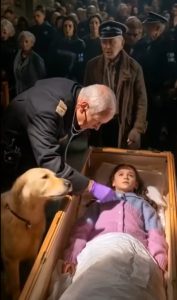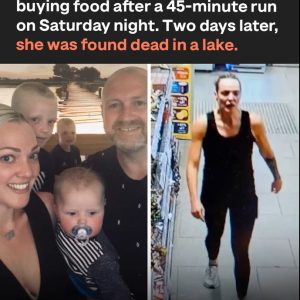I always thought funerals were for the living — for our grief, our closure. But the day we said goodbye to my 21-year-old granddaughter Lily changed everything I believed.
They called it an “accidental death.” Cold words that did little to ease the ache. Lily was bright, full of life… and suddenly gone. When they brought in her polished casket, something in me broke.

Then came Max — Lily’s golden retriever and lifelong companion. We’d left him at home, thinking it would be too much. But he escaped, ran across town, and burst into the church just as the final prayer began.
He sprinted to the casket, barking, circling, pawing. When someone tried to pull him away, he resisted, desperate. I approached and placed my hand on his back — and that’s when I felt it.
The casket… was trembling.
“Open it,” I told the mortician. He hesitated. “Now.”
When the lid came up, Lily lay still — until her finger moved.
She was alive.
Doctors called it catalepsy, a rare condition that mimics death. If not for Max, she would’ve been buried alive.
Weeks later, Lily, recovering in the hospital, whispered, “Grandpa… I dreamt I was in a box. I heard Max barking… and you.”
I choked up. “We were there. He saved you.”
Today, people call Max the Graveyard Guardian. But to me, he’s more than that.
He’s the reason Lily is still here. He’s our miracle.




